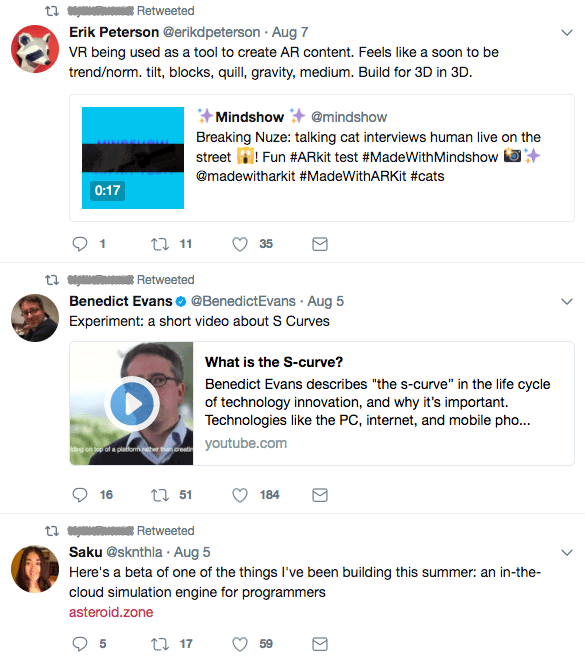A Professional Recruiter's Guide To Using Social Media To Land A Job

I recently left my most recent recruiting position and found myself on the other side of the recruitment process. Even though this is what I do for a living, I’m not going to lie — it’s stressful! And I know it’s even more stressful for my friends and sisters who don’t have a few years of relevant work experience under their belts and have to go through the paradox of “you need experience to get experience.”
That’s where the internet comes in.
I’m serious. I tell anyone who will listen (parents, candidates, co-workers, friends) how valuable an online presence can be, especially for you youths out there. Without those 1-3 years of work experience, a resume just won’t give enough of a picture, and even with 15+ years of work, it won’t tell a recruiter who you are.
A good recruiter is basically a professional internet stalker investigator. If we think you’re a match for the position, you better believe we’ll find everything we can about you, and that includes looking at social media.
So on the recruiting side, particularly for those entry-level “takes experience to get experience” roles, I get filler resumes. Maybe there were some retail positions, research ops, even an internship that’ll tell me about the applicants’ (or, often, their parents’) initiative. But it won’t tell me about who they are or what they value.
For that, I’ll always check their social profiles or online activity — and it’s not just me. Businesses like Entelo are now making it easier than ever for recruiters to see an aggregate of all public online activity for any one candidate.
LinkedIn
The professional’s social media page is a given, so let’s knock that one out first. This is the first place a recruiter is going to dig, after going through your resume (and in some cases, before), so make a strong impression here.
Set your profile up with all the relevant roles you’ve held, any projects or awards, and the skills you can claim. And this should go without saying, but use a professional-looking (or at least inoffensive) photo. Don’t leave it blank, and definitely don’t make it inflammatory. Think about how your future employer might see you based on the limited information you provide and act accordingly.
Then be proactive, asking former coworkers, managers, professors, and even friends for a positive reference. The more positive, specific content you have on LinkedIn, the more your recruiter can start to picture you in the role.
The Big 3 – Facebook, Twitter, Instagram
Same rules apply on the big three, even if you don’t think “office environment” when you scroll through 90% of your friends’ feeds. And before I even start, I’ll say that you can (and sometimes should) set everything to private. That said, even when you do that, a recruiter may be able to view your page anyway. So, again, act accordingly. No offensive photos, please.
Use Twitter to highlight that you’re engaged in whichever field you’re applying into. Use Facebook to share your personality, and ask a parent or mentor to check it for anything that may give an employer pause. If you’re interested in creative fields, use your Pinterest or Instagram to display your style and skills.

And, let’s be real — social media can be more damaging than beneficial. Seriously, everyone should consider how they want their employer to view them. Any inside jokes (like the one pictured below) or photos that might be misconstrued need to go.

Social Media is a tool, so use it to your benefit.
Get Career-Specific
Those are just the basics. While I, of course, don’t advocate meeting strangers from the internet, it’s worth it to look into online resources in your field. If I need creative talent, I’ll look at DeviantArt or Behance. Tech talent, I’ll check Stack Overflow or Github. Find the outlets that allow you to showcase your skills or previous work — whether small projects and school assignments or a fully developed portfolio.
DIY
And then take it one step further and make your own website — it’s really not as hard as you think, thanks to tools like Wix and Squarespace. These turn building a website into a code-free and quick process, letting you drag and drop pieces of a website together, and customize however you see fit. It’s worth the 10-30 minutes it takes to set up an online portfolio or profile, even if you just have a handful of projects to show off — and don’t forget to include an “About Me” or “Contact” section! You’ll want to include your email address and resume, especially if you’re actively looking for work!
*****
Whether on the big three social media sites or building out your own website, it helps to have a gut-check. Is this something you’d want your boss to know about? Is it something you’d want your grandparents to see? If the answer is no to either question, it probably shouldn’t go on the internet. Your future boss can (and likely will) find it.
This post was originally published on a fledgling blog meant to help the author eliminate anxiety from her life, and to help organize her thoughts.
Image via Unsplash




